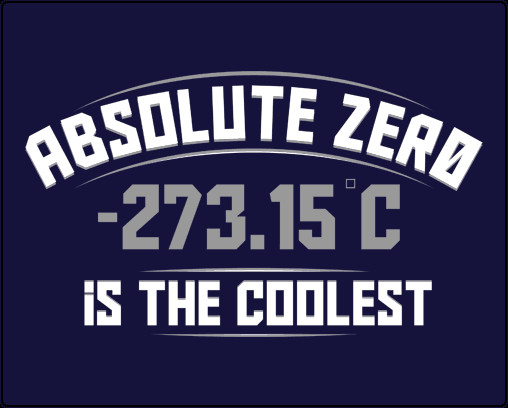Long strides close to the secret of absolute zero
Scientists have developed a chip that can cool itself to a record temperature of 2.8 millimeters. This record opens up a great potential to better understand the physical state of matter as it approaches.
Scientists have long been attracted to special physical properties near absolute zero , 0 ° Kelvin temperature, or -273.15 ° C , the temperature at which matter no longer exists. This is the limit where particles reach the lowest possible speed, since this limit is raised in hypotheses. After decades of controversy, scientists have argued that reaching zero is absolutely impossible.

Absolute zero is the theoretical coldest value.
However, this does not make them give up. A team at the University of Basel recently developed a device that helps us get ever closer to the coldest limit, and can allow them to discover strange physical phenomena that are thought to occur in absolute maximum temperature point. The team developed an electronically cooled nano-chip to a record temperature of 2.8 milli kelvin. This device uses a cooling magnetic field, through an influential magnetic field that reduces the chip's electrical connections to 150 microkelvin.
Using a desirable designed magnetic field system, the team also simultaneously cooled a thermometer to measure the temperature, and maintained the temperature of the chip for seven hours. This extended period of time allows the team to study this super cool state in more detail. This cooling chip itself has been astonishingly impressive, but in fact it is not the most interesting part of this experiment.
This cooling chip has opened up a great potential to better understand what happens to physical states when approaching the absolute zero. This understanding may continue to increase, because researchers are hoping to improve equipment and testing methods to eventually achieve 1 millikelvin. In the past year, the observed limit (also known as the quantum backaction limit ) on the theoretical coldness of the object has been broken.
Researchers can cool an object below one fifth of a quantum unit, pushing it more than two decibels below the backaction limit of quantum. But then, the scientists officially demonstrated the third law of thermodynamics by proving that according to mathematical principles it is impossible to cool to absolute zero.
The strange physical space when it reaches zero is not fully explored because it has been very difficult to achieve in tests. With this new ability to study this uber-cold state, there is still much to learn about the physical properties at these low temperatures. In addition, understanding absolute zero can improve the performance of modern electronic devices.

New nano-sized microchip designed.
For example, the performance of transistors is greatly affected by temperature. Traditional transistors encounter a variety of problems when they are too hot. Used in computers, smart devices and other commercial electronic devices are more effective at extremely low temperatures, just like what is above absolutely not.
The use of extremely low temperatures can improve not only home electronics, but also support the technologies we use to explore distant universes. Infrared cameras were created to take photos of the space needed to operate at the lowest possible temperature, allowing them to operate with maximum sensitivity. These temperatures can also be integrated in promoting medical imaging technology.
- There is evidence that cannot be achieved 'absolute zero'.
- Simple trick to live long
- The secret to long life, long life
- 5 rules to help you live longer than 12 years
- Magnetic properties disappear at almost 0 degrees absolute
- Simple ways to live long
- The secret to keeping the peach blossoms long during Tet
- These simple elements help you live long
- Close-up of ant species possessing a huge 'beer belly'
- The secret to help the ice cream to not melt
- The house spider is a giant mouse
- The life secret of animals
 'Fine laughs' - Scary and painful torture in ancient times
'Fine laughs' - Scary and painful torture in ancient times The sequence of numbers 142857 of the Egyptian pyramids is known as the strangest number in the world - Why?
The sequence of numbers 142857 of the Egyptian pyramids is known as the strangest number in the world - Why? History of the iron
History of the iron What is alum?
What is alum?